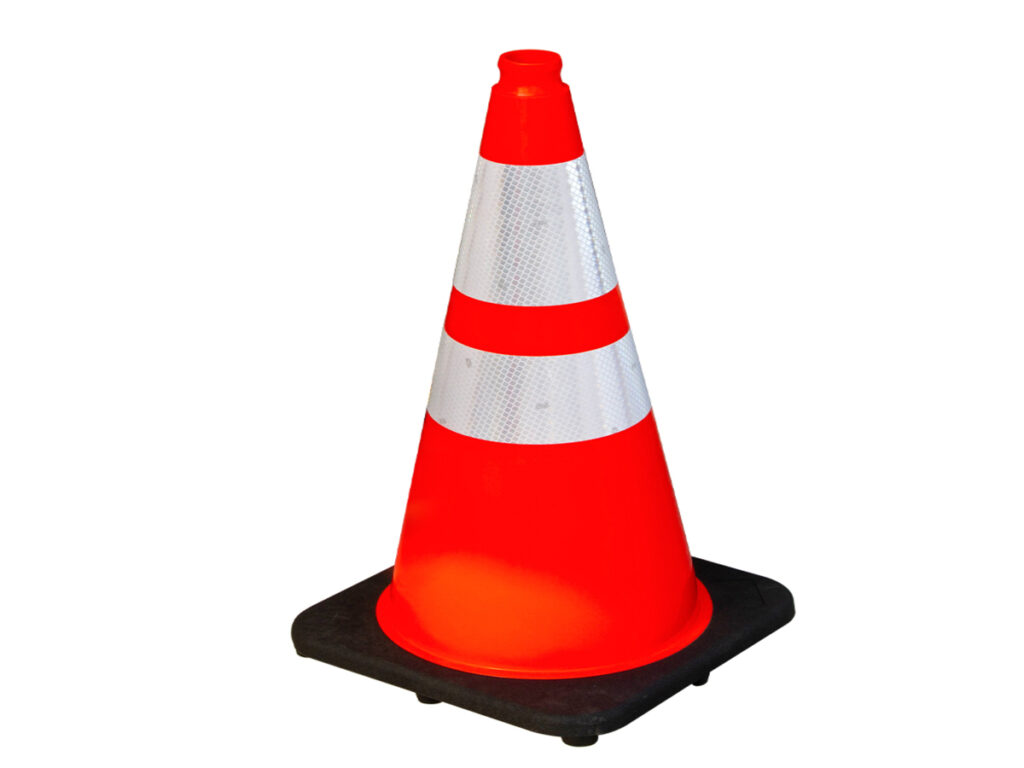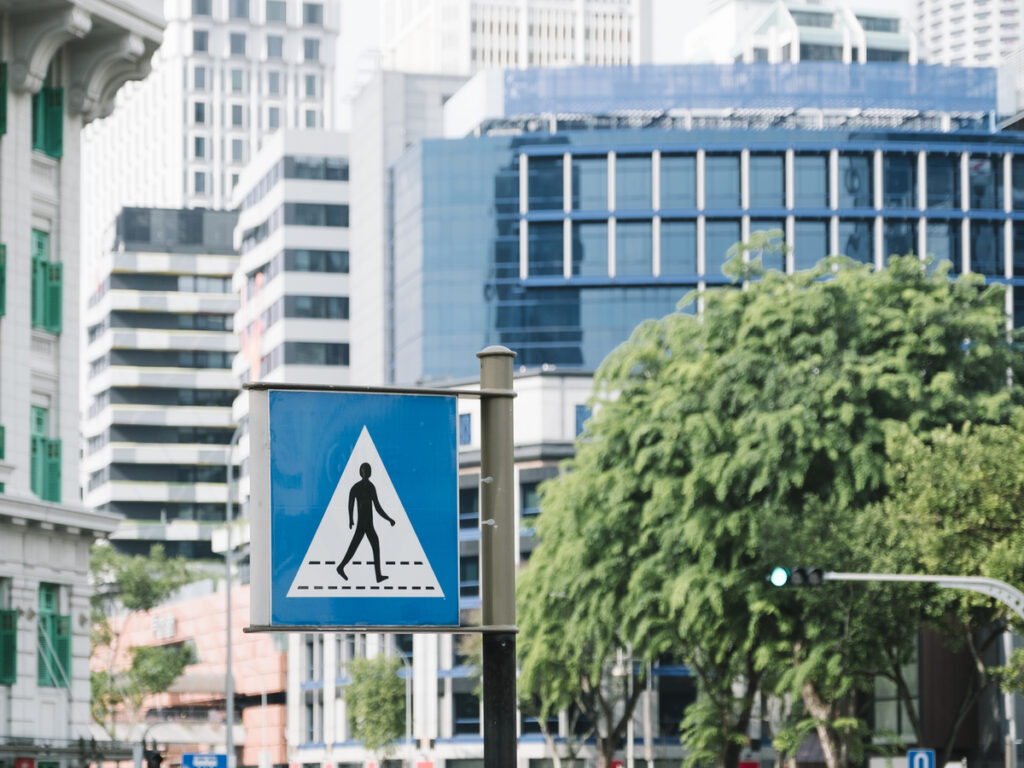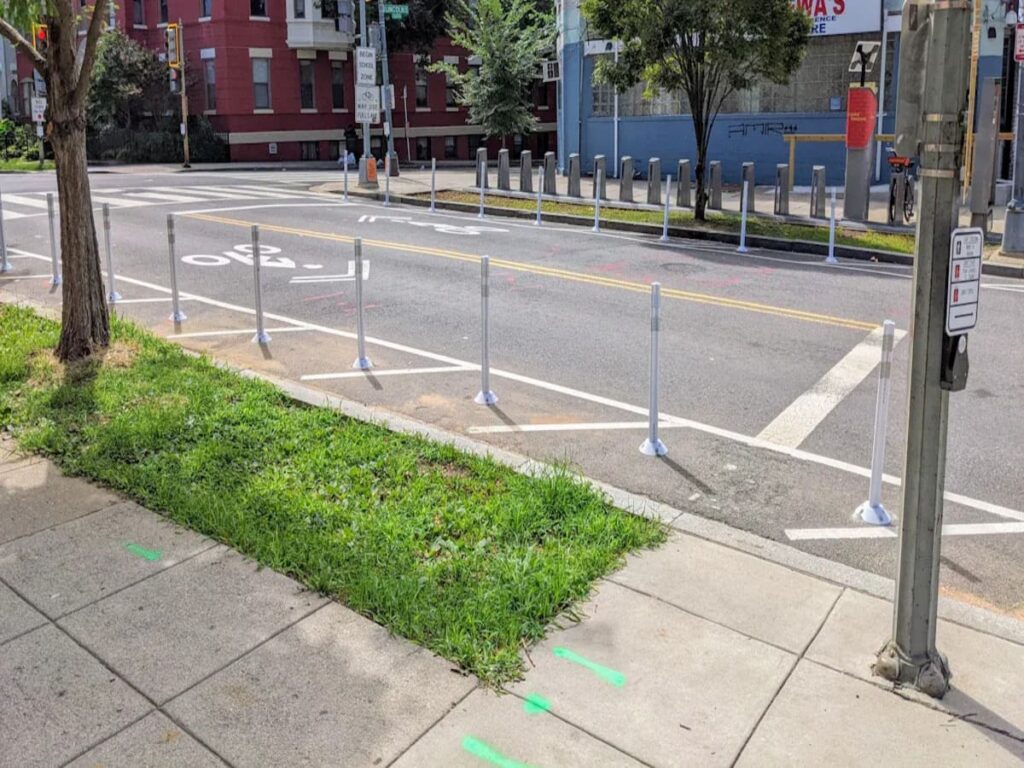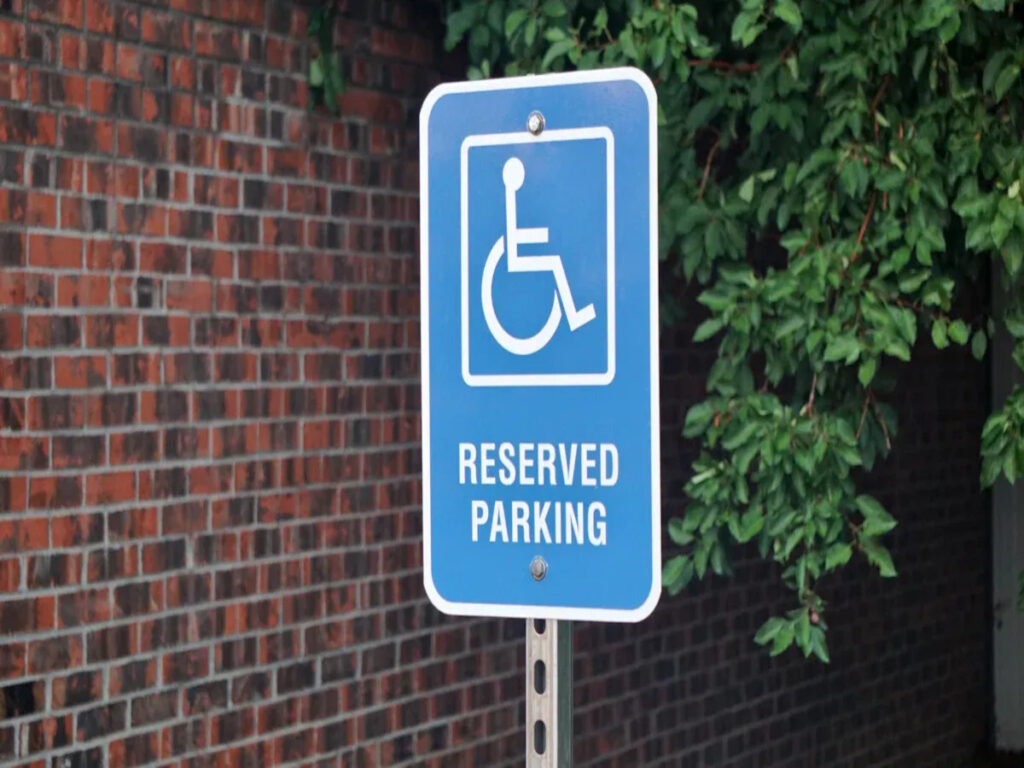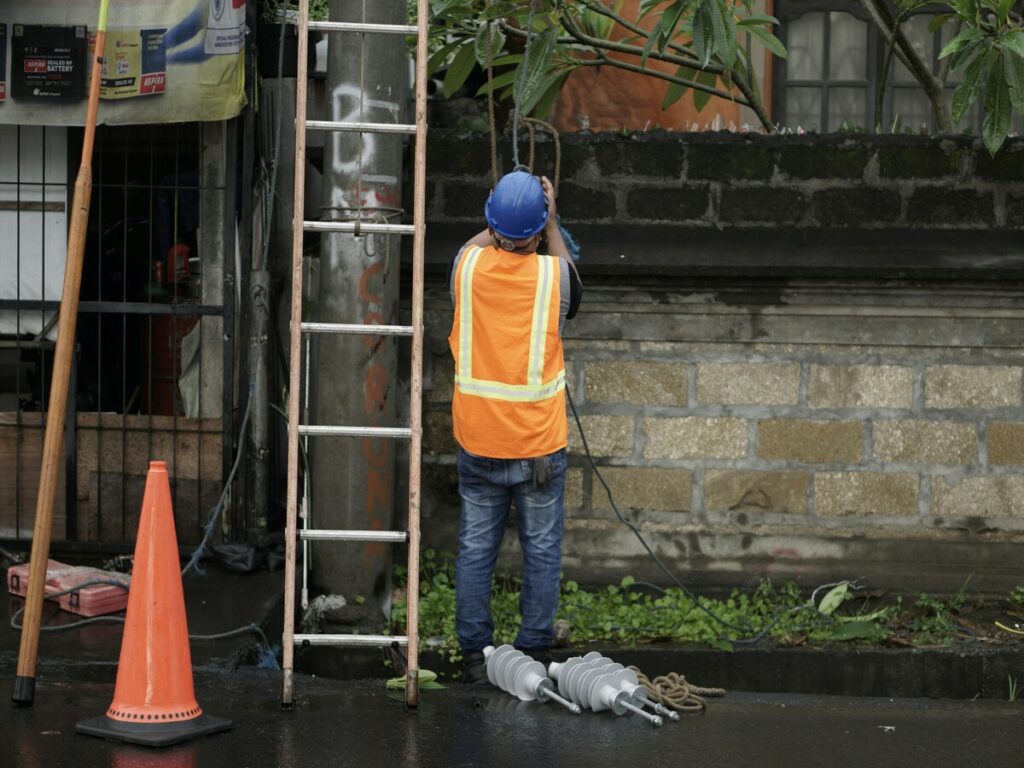
作業ゾーン そして、仕事のサイトは、適切な安全対策なしに深刻なリスクを引き起こす可能性があります. OSHAトラフィックコーン規制 明確な標準を設定することにより、より安全な環境を作成するのに役立ちます. これらのルールは、コーンが見えるようにします, 耐久性, 労働者と一般の人々を保護するために正しく配置されます. これらの安全規制に従うことで事故を最小限に抑え、サイトに準拠させます. これらのガイドラインを理解して適用することにより, 職場の安全性を維持するために不可欠な一歩を踏み出します.
職場がOSHAの安全基準を満たすようにするため, Optrafficを探索できます OSHA準拠のトラフィックコーン そして、あなたのニーズに最適な製品を選択してください. 今日お問い合わせください 専門家のアドバイスを得て、サイトに最適なトラフィックコーンソリューションを見つけるために、安全のために構築されています, 耐久性, そして完全なコンプライアンス.
OSHAトラフィックコーン規制の理解

サイズと高さの標準
さまざまな作業ゾーンの最小高さ要件
トラフィックコーンの高さ 作業ゾーンの視界と安全性を確保する上で重要な役割を果たします. OSHAトラフィックコーン規制 次の最小高さ要件を指定します:
- 高速道路で使用されるコーンは少なくとも必要です 28 インチ 高い.
- 高速道路には背の高いコーンが推奨され、ドライバーに簡単に表示できるようになります.
これらのトラフィックコーン標準は、作業ゾーンに適切な作業コーンを選択するのに役立ちます, コンプライアンスを確保し、リスクを軽減します.
安全性の向上, 高品質を選択することを検討してください, などの耐久性のあるオプション 販売中のオプトラフィックトラフィックコーン, 多様な環境での最大の視認性と信頼性のためにOSHAの高さの基準を満たすか超える.
夜間のコーンの特別な考慮事項
夜間の作業ゾーンには、視認性が向上した作業コーンが必要です. 反射材料は、低光条件で使用されるコーンに不可欠です. これらの素材により、ヘッドライトは作業コーンを照らすことができます, 遠くから見えるようにします. また、視界をさらに向上させるために、夜に背の高い作業コーンを使用することを検討する必要があります.
ヒント: トラフィックコーンが満たされていることを常に確認してください 均一な交通制御装置のマニュアル (mutcd) 夜間使用のガイドライン.
可視性要件
低光条件のための反射材料
OSHA 低照度または夜間の条件のための作業コーンでの反射帯の使用を義務付けます. これらのバンドは可視性を向上させ、トラフィックコーンの法則へのコンプライアンスを確保します. The mutcd また、高速道路で使用される作業コーンには反射材料が必要です.
| 特徴 | 説明 |
|---|---|
| 色 | 明るいオレンジ, 注意のための普遍的な信号, 即時の可視性を確保します. |
| 反射バンド | 低照度条件での視界を向上させるために、高速道路または夜間に使用されるコーンに必要な. |
| コンプライアンスリファレンス | MUTCDは、低光のシナリオで交通コーンの反射資料を義務付けます. |
OSHAが承認した色を最大限に視聴できます
明るいオレンジは、トラフィックコーンの標準色です, 注意を払って注意を喚起し、注意を引いてください. この色は、さまざまな環境でコーンが際立っていることを保証します, 建設ゾーンから公共スペースまで. 使用 OSHAが承認した色 安全規制に準拠し、トラフィックコントロールデバイスの有効性を向上させるのに役立ちます.
耐久性と材料基準
屋外での使用のための耐候性材料
交通コーンは、効果的なままであるために厳しい気象条件に耐えなければなりません. OSHAは、強化プラスチックのような耐久性のある材料から作られたコーンを使用することをお勧めします, PVC, またはゴム. これらの材料は亀裂に抵抗します, フェード, そして粉砕, 極端な温度でも.
| 材料 | 説明 |
|---|---|
| PVC | 柔軟で回復力があります, 屋外での使用に最適です, 極端な温度でひび割れや衰退に抵抗します. |
| ゴム | 優れた安定性と耐衝撃性を提供します, 交通量の多い地域に適しています. |
交通量の多い領域の頑丈なコーン
交通量の多い領域では、頻繁な影響や大量の使用に耐えることができるコーンが必要です. ゴム製のコーンは、優れた安定性と耐衝撃性を提供します, これらの状況に最適にします. 頑丈なコーンを選択します, コンプライアンスを確保します OSHAバリケード安全基準 安全な職場環境を維持します.
優れた耐久性とパフォーマンスのため, 販売用のオプトラフィックトラフィックコーンを選択します, 交通量の多いゾーンで必要な安全性を提供しながら、最も厳しい条件に耐えるように設計されています.
注記: 耐久性のあるトラフィックコーンは交換コストを削減し、OSHAトラフィックコーン規制への長期的なコンプライアンスを確保する.
OSHAトラフィックコーンの規制に従って、トラフィックコーンの配置と使用

トラフィックコーン配置ガイドライン
作業ゾーンのコーン間の適切な間隔
交通コーンの適切な間隔は、ドライバーの明確なガイダンスを保証し、作業ゾーンの安全性を高める. The 均一な交通制御装置のマニュアル (mutcd) aをお勧めします 20:1 テーパーレート. これはすべての意味です 20 車線の閉鎖の足, テーパーは片足で伸びる必要があります. 高速道路で, 高速道路のコーンは、ドライバーに反応するのに十分な時間を与えるために、より遠くに間隔を置く必要があります. 低速道路用, より近い間隔は、より良いガイダンスを提供します. 道路の種類と速度制限に基づいて間隔を調整することで、OSHAトラフィックコーンの規制のコンプライアンスが保証され、交通の流れが改善されます.
車両の速度と交通の流れに基づく配置
車両速度は、交通コーンの配置方法に大きく影響します. 高速領域の場合, 反射的な襟付きの背の高いコーンは、視界を改善します. コーン間の適切な間隔では、ドライバーがより多くの時間を反応させて速度低下させることができます. 低速ゾーンで, コーンを近くに配置して明確なパスを作成することができます. トラフィックフローを常に検討し、コーン配置を調整して、作業ゾーンの秩序と安全性を維持する.
状況アプリケーション
建設現場の交通コーン配置
建設現場で, 適切な交通コーンの配置は、労働者とドライバーの安全に重要です. 視認性を確保するために、コーンを配置するときは常にトラフィックに直面してください. の最小間隔を維持します 30 建設コーンの間の足と少なくともそれらを配置します 200 十分な警告を提供するために作業エリアから足. 追加の道路コーンを使用して、危険や障害物をマークします. 高速領域の場合, 建設コーンは少なくともそうする必要があります 28 身長インチ, 一方、18インチのコーンは低速ゾーンではうまく機能します.
道路工事と公共スペースのガイドライン
道路工事と公共スペース用, 道路のコーンは、先細りパターンを使用して作業エリアからのトラフィックを導く必要があります. ロードコーンについての位置 250 作業ゾーンの開始から足を調整するのに十分な時間を与えるために、. 一貫した障壁を作成するために、スペースロードコーン. 夜間の可視性に反射襟を使用し、コーンがトラフィックコントロールデバイスのOSHA基準を満たすことを確認してください.
可視性の向上
コーンをブロックする障害物を避けます
障害物は、交通コーンの有効性を低下させる可能性があります. 駐車中の車両のようなオブジェクトを常に確認してください, 装置, または、コーンを視界からブロックする可能性のある破片. 可視性を維持し、トラフィックコーンの法則への順守を確保するために、これらの障害物をクリアします.
必要に応じて追加の照明または標識を使用します
低照度条件で, 追加の照明または看板は、コーンの視認性を高めます. 使用 ポータブルライト または 照らされた兆候 作業ゾーンに注意を引くため. これらのチャネル化デバイスは安全性を向上させ、ドライバーがエリアを安全にナビゲートするのに役立ちます. コーンと他のコーンを組み合わせる バリケードツール OSHA規制の順守を保証し、リスクを軽減します.
OSHAトラフィックコーン規制の順守のためのメンテナンスと検査
定期的な検査慣行
摩耗と裂け目を識別します
交通コーンを定期的に検査することは、摩耗や裂け目の兆候を特定するのに役立ちます. 亀裂を探します, へこみ, または、可視性と有効性を低下させる可能性のある色あせた色. 損傷したコーンは、OSHAバリケードの安全基準を満たすことができない可能性があります, 労働者と運転手を危険にさらす. 頻繁な検査では、トラフィックコーンがトラフィックコーンの法則に準拠したままであり、効果的な交通制御装置としての役割を維持していることを確認してください.
反射率を確保することはそのままです
反射材 反射コーンでは、低光の状態で重要な役割を果たします. 時間とともに, ダート, デブリ, そして、天候への曝露は反射率を低下させる可能性があります. 検査中に反射帯をチェックして、それらが無傷で機能的であることを確認してください. バンドが鈍いまたは破損しているように見える場合, OSHAトラフィックコーンの規制に準拠し、作業ゾーンで安全を維持するためにすぐに交換してください.
クリーニングと保管のヒント
コーンの視界を維持するためのクリーニング方法
作業コーンをきれいに保つことは、OSHA規制の可視性とコンプライアンスを維持するために不可欠です. これらの方法を使用して、その効果を維持します:
- 中程度の石鹸と水で作業コーンを洗って汚れを取り除く, デブリ, および汚染物質.
- 残留物の蓄積を防ぐために、徹底的にすすいでください.
- 保管する前に、作業コーンを完全に乾燥させます.
定期的なクリーニングは、鮮やかな色と反射素材を保証します。, 特に交通量の多いゾーンで.
損傷を防ぐための適切な保管
適切なストレージは、作業コーンの寿命を延ばし、OSHAバリケードの安全基準に準拠しています. これらのベストプラクティスに従ってください:
- 交通コーンを清潔に直立させます, 反りを防ぐための乾燥エリア.
- 材料を保護するために直射日光と極端な温度を避けてください.
- コーンを慎重に積み重ねてスペースを節約し、その形を維持する.
- 蓄積されたトラフィックコーンを定期的に検査してください.
これらの手順は、トラフィックコーンの構造的完全性を維持し、信頼できるチャネル化デバイスのままであることを確認するのに役立ちます.
非準拠コーンの交換
サイン コーンには交換が必要です
コンプライアンスを維持するためには、作業コーンが交換が必要なときに重要です. 気づいたらコーンを交換してください:
- ひび割れ, へこみ, または他の構造的損傷.
- 可視性を低下させる色あせた色.
- もはや効果的に機能しない反射バンド.
破損した作業コーンを使用すると、OSHAトラフィックコーンの規制に違反し、作業ゾーンの安全性が妥協する可能性があります.
タイムリーな交換のためのベストプラクティス
非準拠コーンをタイムリーに交換することで、作業ゾーンが安全であり、OSHA基準を満たしていることが保証されます. 損傷したコーンをすぐに交換するために予備のコーンのストックを保管してください. 定期的な検査を実施して、リスクをもたらす前に交換が必要なコーンを特定する. 積極的に保つことによって, コンプライアンスを維持し、労働者と一般の人々を保護します.
よくある間違いを避けます
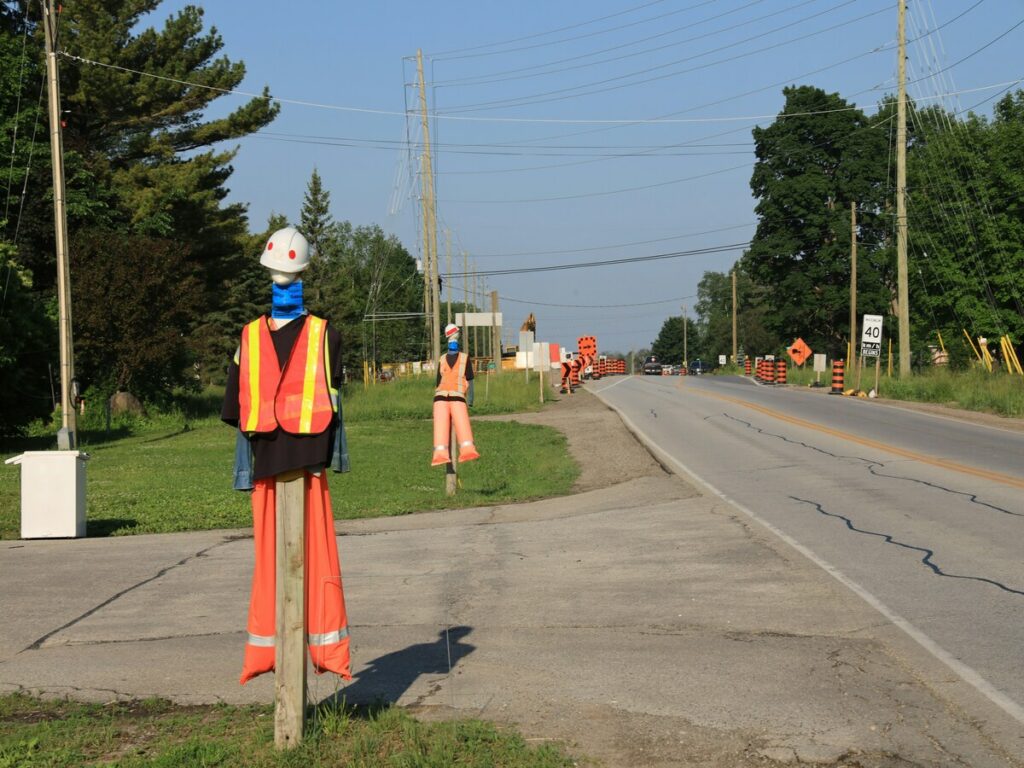
非準拠コーンを使用します
OSHA基準に違反しないリスク
トラフィックコントロールゾーンに準拠していないコーンを使用すると、深刻な結果につながる可能性があります. OSHA規制に違反するリスクがあります, その結果、検査と引用が発生する可能性があります. MUTCDへの違反は、労働者や歩行者に危険な条件を生み出すこともあります. これにより、組織の事故と責任の可能性が高まります. さらに, 安全基準を満たさない安全性コーンは、適切な警告を提供しない場合があります, 歩行者とドライバーは危険に対して脆弱なままにします.
ヒント: トラフィックコーンがMUTCDの間隔とテーパーの長さの要件を満たしていることを常に確認して、トラフィックの適切なチャネル化を維持します.
購入する前にコンプライアンスを確認する方法
交通コーンを購入する前, OSHAおよびMUTCD標準へのコンプライアンスを確認します. PVCやゴムなどの耐久性のある材料で作られたコーンを探してください, これらは長期使用のために設計されているためです. 反射バンドをチェックし、トラフィックコーンが明るいオレンジ色であることを確認するために最大限の視認性. メーカーの仕様を確認します トラフィックコーンを確認するには、高さと耐久性の要件を満たすため. これらの手順を取ることによって, 安全基準を満たしていない交通コーンへの投資を避けることができます.
誤ったトラフィックコーン配置
コーンを近づけすぎたり、離れすぎたりします
不適切なトラフィックコーン配置は、ドライバーを混乱させ、安全性を減らすことができます. コーンを近づけすぎると過密になります, それらをあまりにも離れすぎている間、それらの有効性が低下します. これらの間違いを避けるため, の一貫した距離を維持します 20 一時的な交通制御ゾーンのコーン間の足. 建設現場の場合, ほぼコーンの配置を開始します 40 作業エリアからのペース. これにより、ドライバーの明確さと適切なガイダンスが保証されます.
交通速度とフローの考慮事項を無視します
交通速度とフローがコーンの配置において重要な役割を果たす. 高速エリアで, 背の高いコーンを使用して間隔を上げて、ドライバーがより多くの時間を与えるための時間を与える. 低速ゾーン用, 間隔を近くすると、明確なパスが作成されます. ドライバーの観点から環境を常に評価して、私道のコーンが歩行者や運転手に簡単に見られるようにすることを確認してください. 適切な配置は安全性を高め、OSHAトラフィックコーン配置ガイドラインのコンプライアンスを保証します.
メンテナンスを無視します
コーンが色あせたり破損したりするようにします
メンテナンスを無視すると、つながる可能性があります 色あせた または損傷したコーン, 可視性と有効性を低下させます. これにより、事故のリスクが高まります, 特に夜に. コーンを良好な状態に保つためには、定期的な清掃と検査が不可欠です. コーンを石鹸と水で洗って汚れを取り除きます, 亀裂や摩耗した反射バンドを確認してください. コンプライアンスと安全性を維持するために、損傷したコーンをすぐに交換する必要があります.
定期的な検査と交換を見下ろす
定期的な検査をスキップすると、非準拠のコーンが使用されている可能性があります. コーンを頻繁に検査して、摩耗や裂傷を識別します. コーンを構造的な損傷または色あせた色に置き換えて、それらが効果的なチャネル化デバイスを確実に保つことを確認します. スペアコーンのストックを保持すると、損傷したコーンを迅速に交換できます, ワークゾーンが安全で準拠したままであることを確認してください.
OSHAトラフィックコーンの規制を順守することで、より安全な職場が保証され、労働者と一般の人々のリスクが軽減されます. 各ゾーンでのコーンの適切な配置は、危険を最小限に抑え、トラフィックを効果的に指示します. 定期的なメンテナンス, 清掃と検査を含む, コーンを表示し、準拠しています. PVCやゴム製のコーンなどの耐久性のあるチャネル化デバイスに投資すると、長期コストが削減され、安全性が向上します.
交通コーンは必須バリケードとして機能します, 事故を防ぎながら、車両と歩行者を指導します. OSHA規格に従うことにより, 安全な環境を作成し、スムーズな操作を維持します. 一貫したコンプライアンスはすべての人を保護し、職場が安全要件を満たすことを保証します.
信頼できるものについては、OpTrafficでお問い合わせください, OSHAに準拠した交通コーンは、職場を安全で整理しておくために!
よくある質問
トラフィックコーンの高さの要件は何ですか?
によると OSHAトラフィックコーン規制 そして mutcd (均一な交通制御装置のマニュアル), 交通コーンの高さは少なくとも 18 インチ 低視界エリアでの一時的な交通規制の場合. より厳しい状況に使用されるコーン, 高速道路や建設ゾーンのように, 一般的にそうあるべきです 28 インチ以上.
交通コーンをどの程度離れて配置する必要がありますか?
トラフィックコントロール用の適切なコーン間隔は、アプリケーションによって異なります. 低速ゾーン用 (下 45 MPH), コーンは通常間隔が描かれています 6 に 10 足が離れています. 高速ゾーン用, 間隔は増加するはずです 15 に 20 足 ドライバーに十分な視覚的分離を作成するため.
OSHAトラフィックコーン規制は何ですか?
トラフィックコーンのOSHA規制は、視界に焦点を当てています, 耐久性, 安全基準へのコンプライアンス. コーンは鮮やかな色でなければなりません, 通常 オレンジ と 反射ストリップ, そして、彼らが労働者や運転手に危険をもたらさないように配置されました. これらの基準のコンプライアンスにより、建設ゾーンと道路帯の両方で最大の安全性が保証されます.
OSHA規制に準拠した販売用の交通コーンを購入できますか?
はい, で オプトラフィック, 幅広いセレクションを提供しています 販売中のOSHA準拠のトラフィックコーン 必要なすべてを満たしています mutcd そして OSHA規格 可視性のため, 耐久性, そして安全. 建設現場にコーンが必要かどうか, 駐車管理, またはトラフィックコントロール, 手頃な価格で高品質のソリューションがあります.
私のプロジェクトに最適な交通コーンは何ですか?
選択するとき 交通コーン, コーンの高さのような要因を考慮してください, 材料, そして、それが夜の視界のための反射ストリップを持っているかどうか. オプトラフィック さまざまなものを提供します 販売中の交通コーン, でオプションを含む LEDライト そして 反射コーティング. これらのロードコーンは最高です OSHA そして mutcd 安全性と耐久性の基準.
建設ゾーンのトラフィックコーン間隔ガイドラインは何ですか?
建設ゾーンで, 配置することをお勧めします 交通コーン に基づく 作業ゾーンサイズ そして 車両速度. 高速ゾーン用, コーンはさらに離れて間隔を置く必要があります (まで 20 足), 一方、低速領域では, の間隔 6 に 10 足 十分です. 適切なコーン配置を確認するには、常に地元の規制を確認してください.

